Belgium is our final destination on our Europe trip for 2017. We spent one day and an afternoon in Brussels and one day in Brugge. I absolutely loved Belgium, or as the locals say Bruxelles. It’s such a melting pot of different ethnicities and French flare. The chocolates and desserts make this a place I would definitely return for. Just give me another 24 hours of chocolates, waffles, fudge, croissants and Belgium frites. It’s definitely not the place to visit when you’re on a diet.
This was my first time visiting Belgium, so I had no idea what to expect from Brussels. I knew that French was the prominent language, so I was expecting it to be a little bit like my visit to Bourdeaux. I wasn’t expecting it to be a full-on tourist destination like Rome or Paris. I didn’t mind it though because the rest of the destinations on this trip weren’t big tourist meccas. It did mean we had to try to avoid tourist traps to get the best out of our trip. Our friends also met us in Brussels, since they live just over the English Channel in Kent. So it was lovely to discover this amazing city together.
So since we visited so many parts of Brussels over a couple of days on foot, I have split this post by neighbourhood. The areas we covered include the Center of Brussels (surrounding the Grand Place), Îlot Sacré, Stalingrad, Marolles, Sablon and The Upper Town (Haut de la Ville).
Center of Brussels
One of the first places we visited as soon as we arrived in Brussels was the Grand Place. This is the central square of the city and is surrounded by opulent buildings, including the Town Hall (Hôtel de Ville) and the Breadhouse (Maison du Roi, contains Museum of Brussels). The square is just stunning and feels so surreal to view from inside it.
Just outside of the square Marco had to have a classic Belgium waffle, with his first love, Nutella. I prefer to window shop at the classic Belgium craft souvenirs. They include beautiful handmade lace, dolls with handmade dresses and tapestry bags.
On the eastern side of the central district, we found more restaurants (cheaper), bars, friterie, souvenir shops and live music coming from every street. This wasn’t my favourite part of the city since it was just full of tourists and businesses geared for tourists.
Just a short walk to the north-west of the Grand Place is Rue Henri Maus. Here you will find more restaurants, St Nicholas Church, Bourse de Bruxelles (Brussels Stock Exchange) and Place de la Bourse.
We followed the crowds here on our first afternoon and saw some street performers in the Place de la Bourse. We also got some green juices from healthfood chain EXKi. I was so happy to see Octavia drink something green.
We also visited the Église Saint Nicolas, which backs onto the facade of “House of Goude Huyve“. This 11th-century Romanesque church is almost 1000 years old, however, its been completely rebuilt since then. It holds many great artworks, including “Madonna and Child” of a disciple of Rubens, works of Jean van Orley (1665-1735), Guillaume Herreyns (1743-1827) and G. Kerricks. It also had a large diorama, but I’m not sure it is a permanent installation.
We returned to Rue Henri Maus the next day for lunch with our friends. We dined at the Balls of Glory for handcrafted meatballs. It was actually a pretty cheap and tasty lunch. I had the Pork Meatball with Stoemp (mash potato with carrots and greens) and gravy.
Îlot Sacré
Another one of the first places we visited was the neighbourhood of Îlot Sacré, where you can find the colourful Rue des Bouchers. It is just around the corner from the Grand Place and where we booked stay. Its nice place have a look around, but not somewhere I planned on having dinner since there were tourist menus plastered outside of every restaurant.
On our first afternoon, we did have to get some Belgium frites from Café Georgette. They are known for their Belgium frites, which is actually the national dish. We ended up returning to this restaurant the following night for dinner. I was outnumbered by everyone who wanted to eat burgers. Marco and my friends were very happy with their burgers. I had the Steak Tartare, which was a dish I’ve never had before and is a dish of Brussels. It was actually pretty good and packed full of flavour. Inside it had bresaola, marinated mushrooms with herbs, salsa tartufata, roasted pine nuts and shallots.
We also paid a visit to one of the pub in the area, Delirium Café. They are famous for their long beer list. In 2004 they won the Guinness Book of Records for stocking 2004 different brands. They offer over 60 international beers and also many Belgian brands as well. It was a pretty chill place to have a drink, which you can have outside or inside on one of three levels. And yes, I think we are the only ones that brought our baby to a bar.
Just outside the pub, in the narrow side strip is a cute little fountain, Jeanneke Pis. It is actually a modern fountain of a little girl squatting. I was lucky enough to see it without the caged red gates.
Within Îlot Sacré, you can also find Rue du Marché aux Herbes. This is a lovely pedestrian strip between Rue des Bouchers and the Grand Place. It is full of chocolate shops, other sweet treats and beautiful shops. We had our morning croissants here, from Lowy by La Wetterenoise. We also did a lot of chocolate tasting and bought many special gifts for our family back home.
Perhaps the most glorious site in Îlot Sacré is Les Galeries Royales Saint-Hubert. This amazing arcade is home to luxury boutiques, clockmakers and chocolate shops. It is definitely the place you want to come if you love desserts. We sampled a selection of Mary’s chocolate and I had a Strawberry and White Chocolate Mousse from Neuhaus.
On our first night before our friends arrive, we had dinner at Le Marmiton, which is inside the Les Galeries Royales Saint-Hubert. This restaurant was the perfect place to get introduced to Belgian cuisine. We ordered two of the classic dishes of the city. Marco had the Beef Carbonnade (stew) with Leffe (brown ale), French fried potatoes and a local beer to wash it down. I had the Rabbit leg with Kriek (cherries beer) & Northern cherries, sautéed potatoes (Lapin à la Kriek). I think this is the first time I’ve eaten rabbit, but it was cooked really well. Marco loved his beef, so he didn’t share as usual. Octavia had a bit of everything but prefered to eat the fresh bread offered with the meals.
Stalingrad
Stalingrad is just south of the Grand Place and is still quite touristy with lots more restaurants, chocolate shops and other stores. We were taking a walk around on our first afternoon and by chance ran into the Manneken Pis (Little man Pee). This little fountain with a statue of a little boy peeing is the symbol of the people of Brussels. This is because it depicts their sense of humour and independence of mind. The next day we brought our friends to see Manneken Pis and found that he was dressed up like a little sailor.
You may also want to visit this part of the city to see the Comic Book murals that are part of the Brussels’ Comic Book Route. There are 42 of these murals in Central Brussels, but I only found these ones on our walk through Stalingrad.
On our second day, we walked right down Rue di Midi to Porte de Hal (Halle Gate). This is medieval fortified city gate is part of the Royal Museums for Art and History. The gate is actually 600 years old is a great reminder to Brussels medieval past.
On our last day, we returned to Porte de Hal (Halle Gate) and had our last meal at Le Bistro. This brasserie serves traditional Belguim dishes, such as mussels and Flemish beef stew. I had the Beef Carbonnade (stew) cooked in Grimbergen beer and served with frites (no pictured below) and Marco had a Beefsteak BBB label (Steak frites) with Bernaise sauce. We also ordered a Spaghetti Bolognese and side salad, which was both massive portions. All in all, it was a pretty delicious meal and the restaurant was quite stunning inside.
Marolles
On our second day in Brussels, we did some sightseeing outside of the city centre with our friends. Marolles is an old neighbourhood, where you can find the Palais de Justice (Law Court of Brussels). It was quite a shame that we couldn’t see the exterior that was being renovated. However, the inside was amazing. I was just in awe of how expansive it was.
Just outside the Law Court is Place Poelaert (Square Poelaert), which gives you a nice view, overlooking sixty-three meters Lower Town Brussels.
Sablon
Just north of Marolles is the neighbourhood of Sablon. Here we came across the 15th century Église Notre-Dame du Sablon (Church of Our Blessed Lady of the Sablon). This Gothic-style church is the burial place for several members of the Royal Court. It’s quite large and stunning inside. The altar has the most amazing stain glass windows.
Just outside the Église Notre-Dame du Sablon is the Petite Sablon. This rectangular garden square is quite a feast for the eyes. It features trees, hedges, flowers and statues. The garden was created by architect Henri Beyaert in 1890.
The Upper Town (Haut de la Ville)
The Upper Town or Haut de la Ville is the royal district in Brussell, which a short walk to the east of the Grand Place and north of Sablon. This area is the historical seat of power the region. It is here that the Royal Palaces, Parliament and modern ministries are located. The buildings are styled in 18th century Neoclassical architecture and it is quite a picturesque part of the city.
In this district, you can find the Royal Museums of Fine Arts of Belgium, which houses six different museums inside. Unfortunately, we didn’t have time to visit, but I recommend if you have the time and don’t have a toddler.
The stunning white building with the clock tower is Saint Jacques-sur-Coudenberg, which I didn’t realise at the time was a church. However around the corner is the enormous Palais de Bruxelles (Royal Palace of Brussels). Although it doesn’t look that inviting you can actually visit it inside during the months of July to September. It is still an official royal residence, but the royal family live elsewhere.
Adjacent to the palace is the Parc de Bruxelles (Park of Brussels). This surrounds other important buildings including the Belgian Federal Parliament, the Belgian Prime Ministers’ office and the Egmont Palace. This park often used for concerts and other events. The park is very lush and extremely shady, which is exactly what we needed after walking so long in the sun around this district.
Once we reached the end of the park we came across the St Michael and St Gudula Cathedral. This church was originally built in the 10th century and was dedicated to the patron saint of Brussels, Archangel Saint Michael. Most what stands today originates from the 13th and 15th century. It is quite beautiful inside, especially the stained glass windows.
I hope you enjoyed my little tour of Brussels. My final city stop on this trip will be Bruges, which will conclude my Euro Trip for 2017.
































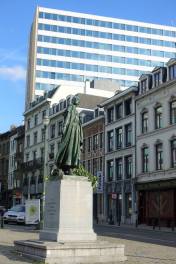


























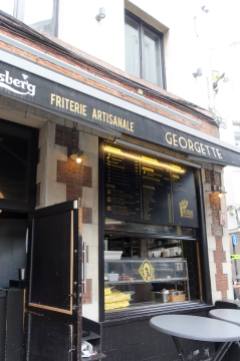


















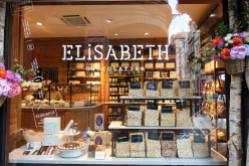


























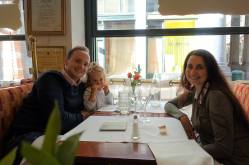




















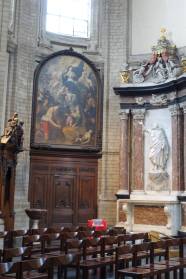
















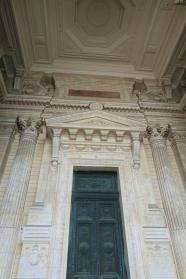











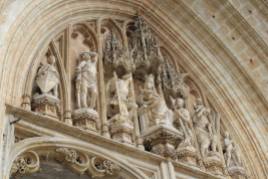























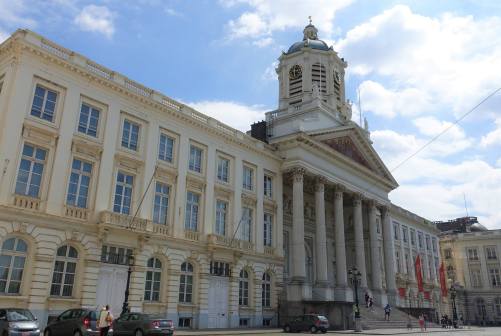


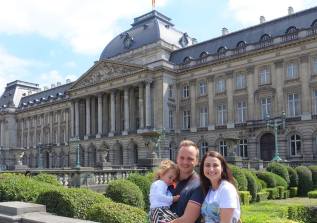





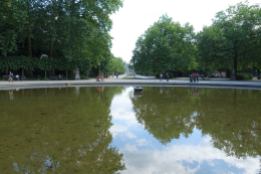











Belgium was one of my favorite countries to visit during my euro trip! I’m glad you had a good time there, the pictures look great!
LikeLiked by 2 people
Thanks Haya. I know it was a big suprise for me how much I would enjoy it. When I did a bus tour with my parents back in 2001 we just drove through Belgium in an hour or two without stopping, so I didn’t think there were so many beautiful cities there. I would definietely love to see more of Beligium next time.
LikeLiked by 1 person
Classic scenery from Belgium !
LikeLiked by 1 person
Thanks for stopping by and following me Evir 🙂
LikeLiked by 1 person
Wow, you had quite an impressive tour, always curious to see what attracts tourists to our capital, glad you enjoyed it!
LikeLiked by 1 person
Thanks Ingrid. Your so lucky to live in such a beautiful country. Are you from the capital or a smaller town?
LikeLike
Hi Vanessa, I live in Aartselaar which is sort of in between Antwerp and Brussels, but closest to Antwerp😉of course, here in Belgium distances are futile🤣have a nice week!
LikeLiked by 1 person
Wow thats such a gorgeous place to live. I wish we had castles and forests. You have a lovely weekend too!
LikeLiked by 2 people
I am sure Brisbane has its qualities too, otherwise not to many people would dream of visiting Australia (including me🤣) but I guess that’s typically human right, to look at wonderful destinations far away and forgetting the wonders under your nose😉 have a lovely week😘
LikeLiked by 1 person
Your right, I guess we lack the history. My aunt in Italy says she loves Australia because it’s all new rather then old infrastructure. I guess it always seems greener…
LikeLiked by 1 person